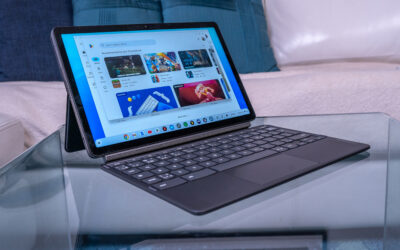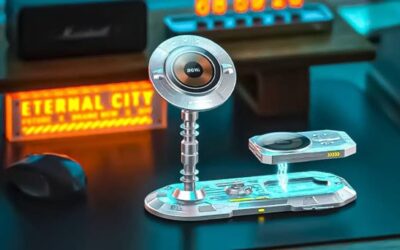Fast USB chargers have emerged as a game-changer, promising quicker charging times and improved convenience for a wide range of devices. This article explores how fast USB chargers work, the advantages they offer over standard chargers, compatibility with various devices, factors to consider when choosing one, and tips for maximizing their effectiveness. Discover how upgrading to a faster USB chargers can streamline your daily routine and keep your devices powered up whenever you need them.
Understanding Fast USB Charging Technology
Fast USB charging technology represents a significant advancement in the realm of device charging efficiency. Unlike standard USB chargers, which typically deliver around 5 volts at 1 ampere (5W), fast USB chargers employ various techniques to increase charging speed dramatically.
How Fast USB Charging Works
Fast USB chargers achieve higher charging speeds through several methods:
- Increased Current Output: Fast chargers can supply higher current levels, often up to 2 amps or more, which allows devices to charge faster without increasing voltage excessively.
- Voltage Regulation: Some fast charging standards, like Qualcomm Quick Charge and USB Power Delivery (USB PD), dynamically adjust voltage levels to optimize charging speed while maintaining device safety.
- Advanced Charging Protocols: Manufacturers often implement proprietary protocols to enhance charging efficiency further. These protocols may include pulse charging, multi-stage charging profiles, and temperature monitoring to prevent overheating.
Advantages of Fast USB Charging
The benefits of fast USB charging technology include:
- Reduced Charging Time: Devices can charge significantly faster compared to traditional chargers, allowing users to top up their batteries quickly, even in short breaks.
- Convenience: Fast charging reduces the need to keep devices plugged in for extended periods, enhancing user mobility and productivity.
- Compatibility: Many modern smartphones, tablets, and laptops support fast charging standards, ensuring broad compatibility across a range of devices.
Compatibility and Standards
Fast USB charging standards vary among manufacturers and device types. Common standards include:
- Qualcomm Quick Charge: Found in many Android devices, Quick Charge delivers faster charging speeds by adjusting voltage levels intelligently.
- USB Power Delivery (USB PD): A universal fast charging standard that supports higher power levels (up to 100W) and is increasingly adopted by laptops, tablets, and smartphones.
- Apple Fast Charging: Apple devices support fast charging using USB PD or proprietary protocols, allowing for quick charging with compatible chargers.
Future Developments and Adoption
As demand for faster charging solutions grows, manufacturers continue to innovate. Future developments may focus on improving efficiency, reducing heat generation during charging, and expanding support for higher power levels across a broader range of devices.
Understanding fast USB charging technology empowers consumers to make informed decisions when selecting chargers and devices, ensuring they can leverage the benefits of rapid charging without compromising device longevity or safety.
Advantages of Faster USB Chargers
Faster USB chargers offer several compelling advantages over traditional chargers, making them a preferred choice for users seeking efficient and convenient charging solutions. Here’s a detailed look at the benefits:
Reduced Charging Time
One of the most significant advantages of faster USB chargers is their ability to reduce charging times significantly. Compared to standard chargers that typically deliver 5 watts (5V at 1A), fast USB chargers can supply higher currents and sometimes voltages, allowing devices to charge much faster. For example, devices equipped with Qualcomm Quick Charge or USB Power Delivery (USB PD) can charge up to 4 times faster than conventional methods, making them ideal for users on the go or in need of a quick battery boost.
Enhanced Convenience and Mobility
With faster charging speeds, users can spend less time tethered to a charging outlet. This convenience is particularly valuable in busy environments like airports, coffee shops, or during travel, where a quick charge can keep devices operational throughout the day without long downtimes. The ability to quickly recharge devices also enhances productivity by reducing interruptions and ensuring devices are ready when needed.
Compatibility Across Devices
Fast USB charging standards like Qualcomm Quick Charge, USB PD, and proprietary fast charging technologies from manufacturers such as Apple and Samsung are widely adopted across various devices. This broad compatibility ensures that users can leverage fast charging capabilities across smartphones, tablets, laptops, and other portable electronics without the need for multiple chargers or adapters.
Future-Proofing and Efficiency
Investing in fast USB chargers future-proofs devices as technology continues to evolve. With advancements in charging protocols and standards, fast USB chargers are designed to support higher power outputs and adapt to future device requirements. This efficiency not only optimizes charging times but also contributes to overall energy conservation by reducing the time devices spend connected to power sources.
Safety and Device Protection
Fast USB chargers are engineered with built-in safety features such as temperature monitoring, voltage regulation, and over-current protection to safeguard devices from potential damage caused by overheating or excessive power delivery. These safety measures ensure that devices charge efficiently while maintaining longevity and reliability over extended periods of use.
Environmental Impact
By reducing the time devices spend charging, fast USB chargers contribute to energy conservation and potentially lower carbon footprints. The efficiency gains from faster charging translate into reduced overall power consumption, benefiting both individual users and broader environmental sustainability goals.
Compatibility with Devices
Fast USB chargers are engineered to be compatible with a diverse array of devices, catering to the charging needs of smartphones, tablets, laptops, and other portable electronics. The extensive compatibility of fast USB chargers is crucial for users seeking reliable and efficient charging solutions across different brands and models.
Broad Device Support
Fast USB chargers support a variety of charging standards and protocols, ensuring compatibility with major device manufacturers such as Apple, Samsung, Google, and more. Key compatibility factors include:
- Smartphones: Most modern smartphones are equipped with fast charging capabilities, often supporting standards like Qualcomm Quick Charge or USB Power Delivery (USB PD). These standards enable faster charging speeds compared to conventional USB chargers, ensuring quick power-ups for devices whether you use Android or iOS.
- Tablets: Tablets, known for their larger battery capacities, benefit significantly from fast USB chargers. Devices like iPads, Galaxy Tabs, and other Android tablets can charge faster with compatible chargers, optimizing user convenience and device uptime.
- Laptops: USB Power Delivery (USB PD) has become a standard for charging laptops, providing higher power outputs (up to 100W or more) necessary for powering larger devices. This compatibility allows users to charge their laptops efficiently using USB-C PD chargers, eliminating the need for proprietary adapters.
- Wearable Technology: Smartwatches and fitness trackers also benefit from fast USB chargers. Many wearable devices support fast charging protocols tailored to their smaller battery capacities, ensuring quick and efficient recharging.
Charging Standards and Protocols
Different fast charging standards coexist in the market, each offering unique benefits and compatibility profiles:
- Qualcomm Quick Charge: Widely adopted in Android smartphones and devices, Quick Charge technology adjusts voltage levels to maximize charging efficiency and speed.
- USB Power Delivery (USB PD): A universal standard supported by many devices, including laptops, tablets, smartphones, and accessories. USB PD enables higher power delivery while maintaining interoperability across different device types.
- Apple Fast Charging: Apple devices support fast charging through USB PD with certified chargers, allowing iPhone and iPad users to charge their devices quickly and efficiently.
Factors Influencing Compatibility
When choosing a fast USB charger, consider the following factors to ensure compatibility with your devices:
- Connector Type: USB-C has become the standard connector for fast charging due to its ability to support higher power levels and bidirectional power delivery.
- Power Output: Check the maximum power output supported by your device to ensure the charger can deliver sufficient power for fast charging.
- Certifications: Look for chargers certified by relevant standards organizations or device manufacturers to ensure compatibility and safety.
Benefits of Universal Compatibility
The universal compatibility of fast USB chargers simplifies device charging routines, allowing users to consolidate chargers and adapters for multiple devices. This versatility not only reduces clutter but also enhances convenience, ensuring that devices remain powered up and ready for use wherever you go.
Factors to Consider When Choosing a Fast USB Charger
Tips for Maximizing the Effectiveness of Fast USB Chargers
To make the most out of your fast USB charger and ensure optimal performance, consider these helpful tips:
Use Certified Chargers
Opt for chargers that are certified by standards organizations like USB-IF (for USB PD) or Qualcomm (for Quick Charge). Certified chargers undergo rigorous testing to meet safety and performance standards, ensuring compatibility with your devices.
Choose the Right Charging Cable
Use high-quality USB cables that support fast charging protocols. USB-C cables are generally recommended for fast charging as they can handle higher power outputs and bidirectional power delivery.
Check Device Compatibility
Verify that your devices support the fast charging standard provided by the charger. Some devices may require specific standards like USB PD or Quick Charge for optimal charging speeds.
Avoid Using the Device While Charging
Minimize usage of your device while it’s charging to maximize charging efficiency. Using the device heavily during charging can generate heat and slow down the charging process.
Keep the Charger and Device Cool
Heat can affect charging efficiency and battery life. Place your device and charger in a cool, ventilated area while charging to prevent overheating. Avoid charging devices under direct sunlight or near heat sources.
Charge at the Right Time
Charge your devices when you don’t need to use them actively, such as overnight or during breaks. This allows them to charge fully without interruptions, ensuring they’re ready when you need them.
Use Airplane Mode or Do Not Disturb
Activating airplane mode or do not disturb mode can reduce power consumption and optimize charging speeds. These modes disable background activities and notifications that can drain battery power.
Monitor Charging Progress
Keep an eye on your device’s charging progress to ensure it’s charging at the expected rate. If you notice unusually slow charging speeds, check for any obstructions, cable issues, or compatibility problems.
Regularly Update Firmware
Ensure your device’s firmware is up to date, as manufacturers often release updates to improve charging efficiency and compatibility with fast charging standards.
Consider Battery Health
While fast charging is convenient, occasional use of standard chargers can help maintain battery health. Fast charging generates more heat, which can degrade battery life over time. Balance fast charging with standard charging when appropriate.
By following these tips, you can maximize the effectiveness of your fast USB charger, ensuring efficient and reliable charging for your devices while prolonging their battery life.
Recommended Fast USB Chargers for Different Devices
Smartphones
- Anker PowerPort III Nano: iPhone 12 series, Samsung Galaxy S21, Google Pixel 5, OnePlus 9, Xiaomi Mi 11
- Aukey Focus 63W PD Charger: iPhone 12 series, Samsung Galaxy Note 20 Ultra, Google Pixel 5, OnePlus 9 Pro, Huawei P40 Pro
Tablets
- RAVPower 65W PD Charger: iPad Pro 12.9-inch (2021), Samsung Galaxy Tab S7+, Microsoft Surface Pro 7, Lenovo Tab P11 Pro, Amazon Fire HD 10
- Belkin Boost Charge 27W PD Wall Charger: iPad Air 4, Samsung Galaxy Tab A7, Huawei MatePad Pro, Lenovo Tab M10 Plus, ASUS ZenPad 3S 10
Laptops
- Anker PowerPort Atom PD 4: MacBook Pro 16-inch (2021), Dell XPS 15, HP Spectre x360, Lenovo ThinkPad X1 Carbon, ASUS ZenBook Pro Duo
- Aukey Omnia 100W PD Charger: MacBook Air M1 (2020), Lenovo ThinkPad X1 Yoga, Microsoft Surface Laptop 4, ASUS ROG Zephyrus G14, HP Envy 13
Wearable Technology
- Samsung Super Fast Charger (25W): Samsung Galaxy Watch 3, Samsung Galaxy Buds Pro, Samsung Galaxy Fit 2, Samsung Galaxy Watch Active 2, Samsung Gear S3
- Belkin Boost Charge 3-in-1 Wireless Charger: Apple Watch Series 6, AirPods Pro, iPhone 12 (with MagSafe), Samsung Galaxy Buds Live, Samsung Galaxy S21 Ultra (with wireless charging case)
Other Devices
- Anker PowerPort Solar Charger (21W): Garmin GPSMAP 66i, JBL Flip 5 Bluetooth Speaker, GoPro HERO9 Black, Goal Zero Yeti 200X Portable Power Station, BioLite CampStove 2
- RAVPower Portable Charger (20,000mAh): Nintendo Switch, Sony Alpha a7 III Camera, Bose QuietComfort 35 II Headphones, Kindle Paperwhite, Anker Soundcore Motion+ Bluetooth Speaker
These examples showcase how various fast USB chargers cater to specific devices across different categories, ensuring efficient and rapid charging capabilities tailored to diverse consumer needs.

Conclusion: Enhance Your Charging Experience with Recommended Fast USB Chargers
Choosing the right fast USB charger can significantly improve the way you power your devices, offering speed, efficiency, and convenience. Whether you’re looking to charge smartphones, tablets, laptops, wearables, or other gadgets, selecting a charger that matches your device’s compatibility and power requirements is crucial.
By going for reliable brands like Anker, Aukey, RAVPower, and Belkin, known for their quality and performance, you ensure that your devices receive optimal charging speeds without compromising safety. These chargers support various fast charging standards such as USB Power Delivery (USB PD) and Qualcomm Quick Charge, catering to a wide range of devices from iPhones and iPads to MacBook laptops and Samsung Galaxy tablets.
Investing in a fast USB charger not only saves you time but also enhances your device’s longevity by delivering power efficiently. Additionally, features like multiple ports, compact designs, and advanced safety protections make these chargers versatile companions for home, office, and travel use.
To experience the benefits of fast charging firsthand and streamline your daily routines, consider purchasing one of the recommended fast USB chargers through our affiliate links. Your support allows us to continue providing valuable insights and recommendations for enhancing your tech experience.
Upgrade your charging setup today and enjoy the convenience of rapid, reliable power wherever you go. Click on the links provided to explore the best fast USB chargers for your devices and start charging smarter. Thank you for choosing to shop through our affiliate links and supporting our content!


![FEEL2NICE iPhone Charger fast charging 2 pack Type C Wall Charger Block with 2 pack [6FT&10FT] Long USB C to lightning cable for iPhone 14/13/12/12 Pro Max/11/Xs Max/XR/X,AirPods Pro FEEL2NICE iPhone Charger fast charging 2 pack Type C Wall Charger Block with 2 pack [6FT&10FT] Long USB C to lightning cable for iPhone 14/13/12/12 Pro Max/11/Xs Max/XR/X,AirPods Pro](https://m.media-amazon.com/images/I/311OFRfW5lL._SL500_.jpg)



![Fast Wireless Charger, [2 Pack] NANAMI Qi Certified Wireless Charging Stand Compatible iPhone 15/14/13/12/11 Pro/XS Max/XR/8, Samsung Galaxy S24/S23/S22/S21/S20/S10/S9/Note 20/10 and Qi-Enabled Phone Fast Wireless Charger, [2 Pack] NANAMI Qi Certified Wireless Charging Stand Compatible iPhone 15/14/13/12/11 Pro/XS Max/XR/8, Samsung Galaxy S24/S23/S22/S21/S20/S10/S9/Note 20/10 and Qi-Enabled Phone](https://m.media-amazon.com/images/I/418fFHIIlyL._SL500_.jpg)












